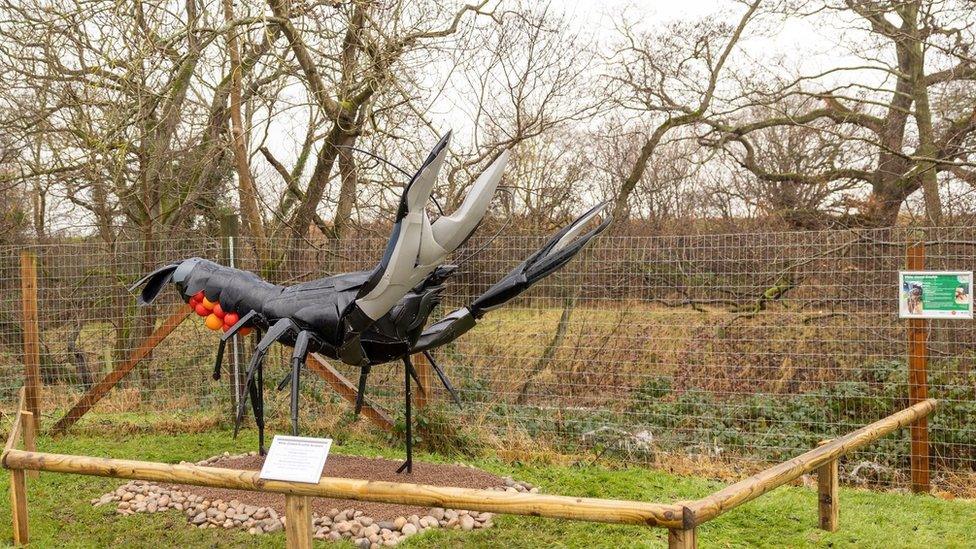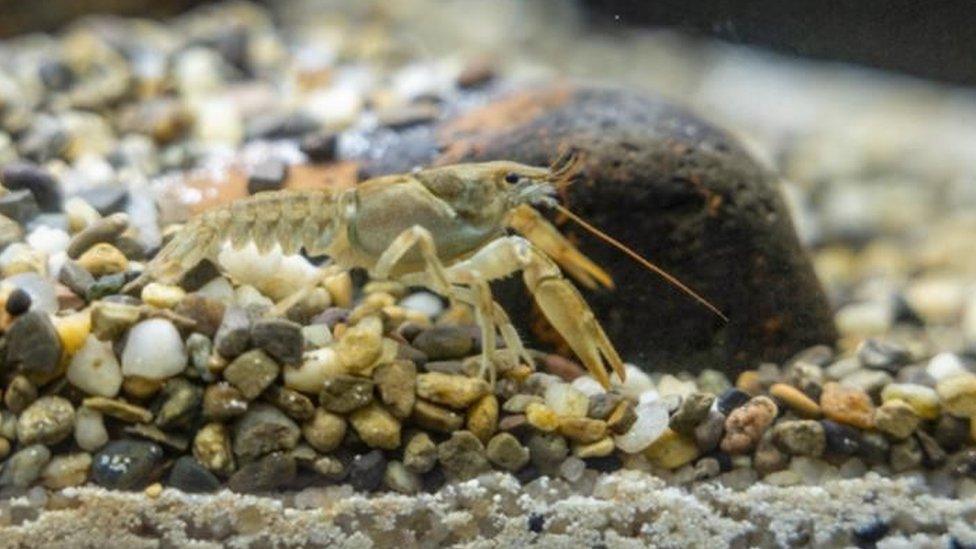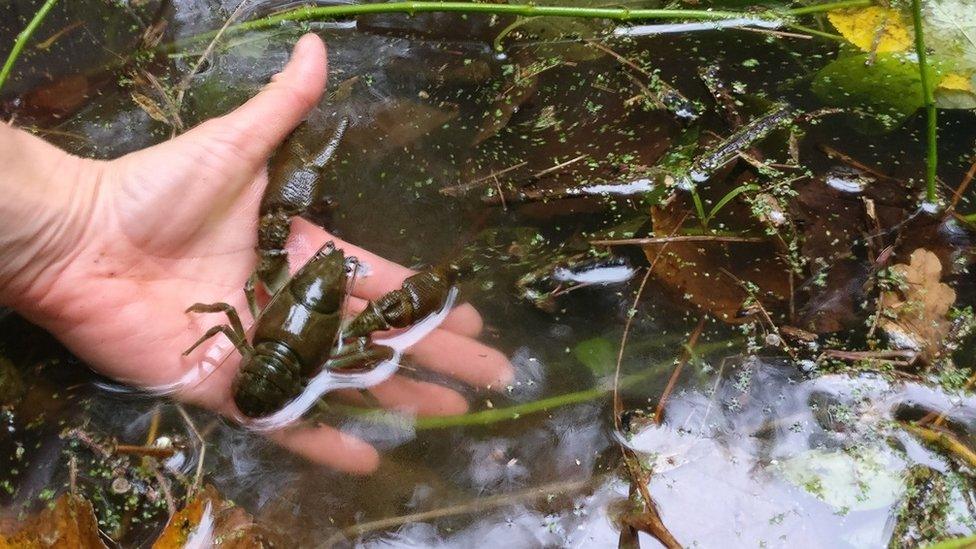White-clawed crayfish: Sculpture highlights plight of species
- Published

The sculpture, created by Ptolemy Elrington of Hubcap Creatures, is made from recycled material
A sculpture of a giant white-clawed crayfish has been unveiled in Northumberland as part of a programme to protect the endangered crustacean.
The UK's only native species has been under threat from the invasive American signal crayfish, which competes for food and carries disease, for decades.
The 12ft-long (3.65m) crayfish sculpture at Northumberland Zoo aims to raise awareness of its plight.
It also marks the start of a breeding programme to boost numbers locally.
Once the breeding facility at the zoo, near Morpeth, is fully operational its captive-bred crayfish will be introduced into the wild to restock areas where they have disappeared.
The partnership - involving the zoo, the Environment Agency, Northumberland Rivers Trust and National Trust- is also calling on local people to "Check, Clean, Dry" their clothing and equipment after visiting local rivers to avoid transferring invasive species and the "crayfish plague" between rivers.

White-clawed crayfish

White-clawed crayfish will be bred at Northumberland Zoo and released locally
The UK's only indigenous crayfish is small; it only grows to between six and 12 cm long and weights up to 90g
It is primarily bronze in colour but has pale cream or rose undersides on its claws
It has been protected in the UK since 1981 and is listed as an endangered species on the global IUCN, external red list
An omnivorous crustacean, it eats invertebrates, carrion, water plants and dead organic matter
It lives in small, freshwater streams of a depth less than one metre, underneath stones and rocks
Source: Wildlifetrusts.org

Pete Kerr, from Northumberland Rivers Trust, said: "While Northumberland's rivers have some of the best remaining populations of native crayfish in the UK, the invasive signal crayfish are closing in from all sides.
"We need to do all we can to protect them otherwise 2022 might be their last year in Northumberland."
Ian Marshall, from the Environment Agency, said: "This native species plays a vital ecological role; they help to keep our waterways clean and are a source of food for other native species.
"It's well known they are in great danger, and while we have made positive progress to protect them we need to continue to take significant action to safeguard their future."
Maxine Bradley, from Northumberland Zoo, said: "We are confident our crayfish sculpture and exhibit will educate and inspire people about this often-overlooked species."

Follow BBC North East & Cumbria on Twitter, external, Facebook, external and Instagram, external. Send your story ideas to northeastandcumbria@bbc.co.uk, external.
Related topics
- Published23 April 2021
